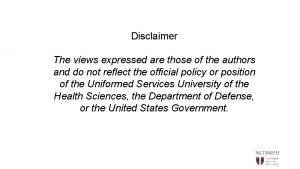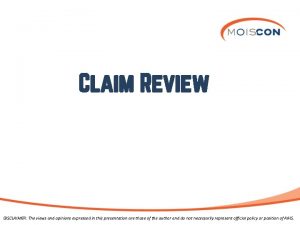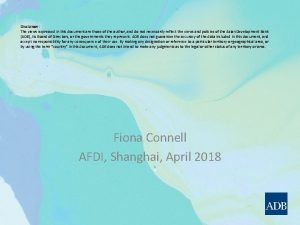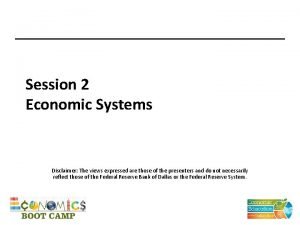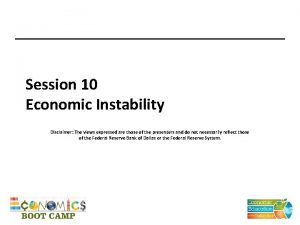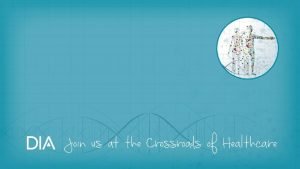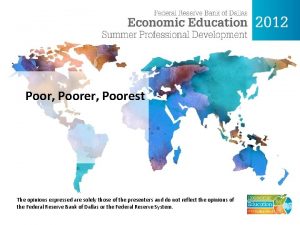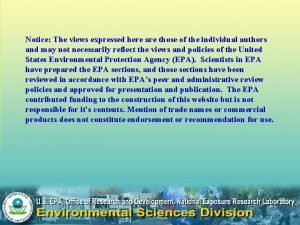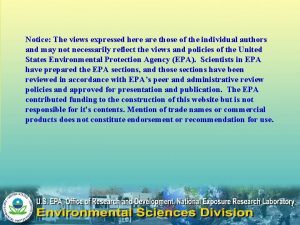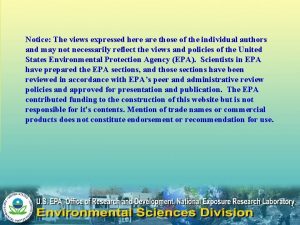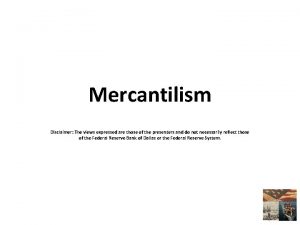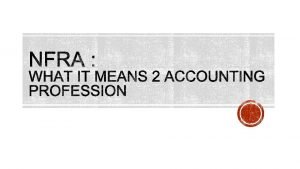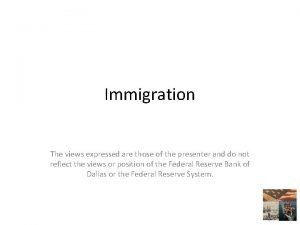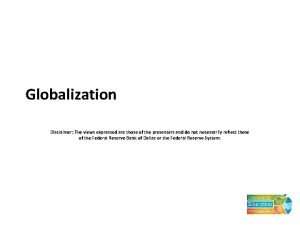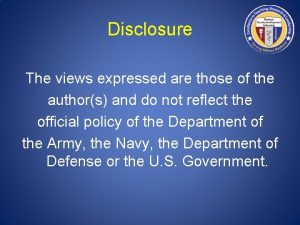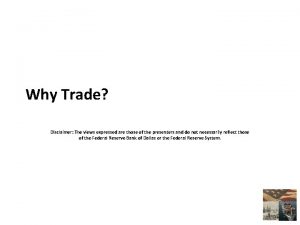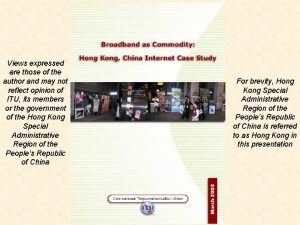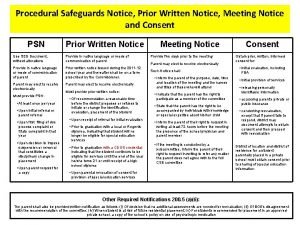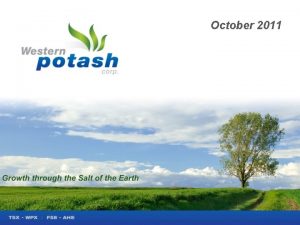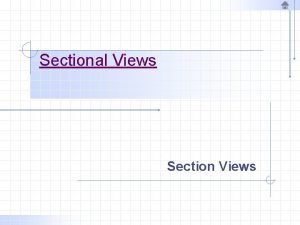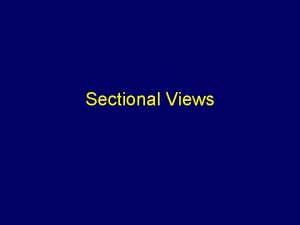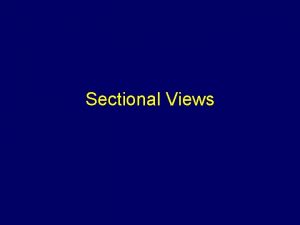Notice The views expressed here are those of





































- Slides: 37

Notice: The views expressed here are those of the individual authors and may not necessarily reflect the views and policies of the United States Environmental Protection Agency (EPA). Scientists in EPA have prepared the EPA sections, and those sections have been reviewed in accordance with EPA’s peer and administrative review policies and approved for presentation and publication. The EPA contributed funding to the construction of this website but is not responsible for it's contents. Mention of trade names or commercial products does not constitute endorsement or recommendation for use.

Life-History Traits and Landscape Patterns: Predicting Population Persistence in the Middle-Atlantic Region © Tom & Pat Leeson, Photo Researchers Inc. Joshua J. Lawler National Research Council, US EPA, Corvallis, OR Nathan Schumaker US EPA, WED NHEERL, Corvallis, OR Denis White US EPA, WED NHEERL, Corvallis, OR

Overview • Reserve selection • Addressing population persistence • Modeling population dynamics

Mohican S. A. Copyright (c) 2002 Gotolatin. com

Reserve-Selection Representation Persistence

Reserve-Selection for Representation • Species richness • Rare species • Complementarity

Reserve-Selection for Representation Priority areas for 769 species

Reserve-Selection for Population Persistence • Redundancy (multiple sites) • Reserve design • Habitat as a surrogate • Accounting for threats • Population Viability Analysis (PVA) feasibility accuracy (minimize edge, maximize connectivity)

Simple Habitat Relationships




S = survival rates R = reproductive rates M = movement events The site scale is characterized by habitat quality Local population dynamics evolve within groups linked by movement Habitat pattern generates regional population trends

Surrogate Species Northern Goshawk Red-shouldered Hawk Cooper’s Hawk © Tom & Pat Leeson, Photo Researchers Inc. Photo by Denis Oehmke

Model Inputs • land-cover • fecundity • survival • dispersal • habitat relationships • area requirements

Population size Model Results Year

Model Results Predicted (static) Observed (dynamic)

Model Results Predicted (static) Observed (dynamic)

Model Results Predicted (static) Observed (dynamic)

Mapping Source Habitat Observed (dynamic) most none

Simple Habitat vs. Source Habitat Simple Habitat Best Source Habitat best most worst none

Addressing Persistence in Reserve-Selection Priority areas for 769 species Priority Sites Goshawks most none

Addressing Persistence in Reserve-Selection Priority areas for 769 species Goshawk Priority Sites for Three Hawk Species Red-shouldered Hawk Cooper’s Hawk


Conclusions • Simple habitat relationships will not always be adequate • Spatially explicit models can help to inform reserve selection • A combination of strategies will likely work best • Additional applications • • Linking life history traits and landscape patterns Future scenarios

Acknowledgements Betsy Smith and EPA’s Regional Vulnerability Assessment Program (Re. VA), The National Research Council (NRC), EPA WED Corvallis, and Pilar Hernandez of Nature. Serve


Model Sensitivity Goshawk Red-shouldered Hawk Cooper’s Hawk

Representing Vulnerability Basic General Threats: What areas are heavily impacted by factors likely to threaten the persistence of multiple species?

Three Measures of Vulnerability Development 42% 10% 5% 1% 0% Agriculture 44% 10% 5% 2% 0% Open Mines 9% 2% 1% 0. 5% 0%

Irreplaceability All Species 8. 977 0. 108 0. 021 0. 005 0. 000

Representation and Vulnerability Agriculture Irreplaceability Development Vulnerability Open Mines

Measuring Vulnerability • % urban/suburban • % agriculture • % open mines

Two Methods for Integrating Vulnerability Irreplaceability and Vulnerability Complete Coverage with Vulnerability Constraint

Expected Modeled population change

Simple Habitat Relationships best worst

 The views expressed here disclaimer
The views expressed here disclaimer Antigentest åre
Antigentest åre The views and opinions expressed
The views and opinions expressed The views expressed disclaimer
The views expressed disclaimer Economics systems
Economics systems All views expressed disclaimer
All views expressed disclaimer Views expressed disclaimer
Views expressed disclaimer The views and opinions
The views and opinions Disclaimer the views expressed
Disclaimer the views expressed The views and opinions expressed
The views and opinions expressed There's a place where streams of grace
There's a place where streams of grace Phản ứng thế ankan
Phản ứng thế ankan Môn thể thao bắt đầu bằng từ đua
Môn thể thao bắt đầu bằng từ đua Khi nào hổ con có thể sống độc lập
Khi nào hổ con có thể sống độc lập điện thế nghỉ
điện thế nghỉ Một số thể thơ truyền thống
Một số thể thơ truyền thống Biện pháp chống mỏi cơ
Biện pháp chống mỏi cơ Trời xanh đây là của chúng ta thể thơ
Trời xanh đây là của chúng ta thể thơ Gấu đi như thế nào
Gấu đi như thế nào Thiếu nhi thế giới liên hoan
Thiếu nhi thế giới liên hoan Số.nguyên tố
Số.nguyên tố Tỉ lệ cơ thể trẻ em
Tỉ lệ cơ thể trẻ em Tia chieu sa te
Tia chieu sa te Các châu lục và đại dương trên thế giới
Các châu lục và đại dương trên thế giới Thế nào là hệ số cao nhất
Thế nào là hệ số cao nhất Hệ hô hấp
Hệ hô hấp Tư thế ngồi viết
Tư thế ngồi viết Hát kết hợp bộ gõ cơ thể
Hát kết hợp bộ gõ cơ thể đặc điểm cơ thể của người tối cổ
đặc điểm cơ thể của người tối cổ Mật thư anh em như thể tay chân
Mật thư anh em như thể tay chân Thang điểm glasgow
Thang điểm glasgow Tư thế ngồi viết
Tư thế ngồi viết ưu thế lai là gì
ưu thế lai là gì Thẻ vin
Thẻ vin Cái miệng bé xinh thế chỉ nói điều hay thôi
Cái miệng bé xinh thế chỉ nói điều hay thôi Thơ thất ngôn tứ tuyệt đường luật
Thơ thất ngôn tứ tuyệt đường luật Các châu lục và đại dương trên thế giới
Các châu lục và đại dương trên thế giới Từ ngữ thể hiện lòng nhân hậu
Từ ngữ thể hiện lòng nhân hậu
